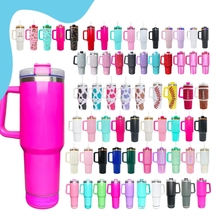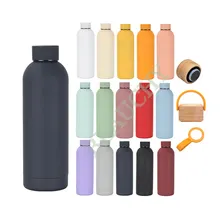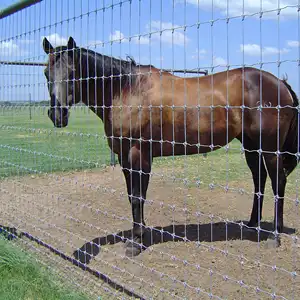Introduction
Welcome to the ultimate guide to revolutionizing your farm through the strategic selection of pasture fences. The importance of pasture fencing extends beyond mere boundary marking, playing a pivotal role in animal maintenance, farm organization, and environmental conservation. With a myriad of options available, from traditional wooden fences to innovative smart fencing systems, choosing the right fence can seem daunting. This guide aims to simplify this process, providing insights into the different types of fences, their advantages, factors to consider when choosing a fence, and the latest innovations in the field. Read on to make an informed decision that suits your needs, budget, and contributes to effective farm management.
Understanding the Importance of Pasture Fencing
Understanding the importance of pasture fencing goes beyond just marking boundaries. It plays a crucial role in animal maintenance, keeping livestock within desired locations while allowing freedom of movement. Fences also protect water resources from pollution and erosion caused by livestock. They ensure the safety of livestock from predators, enhance farm organization by segregating production and grazing areas, and provide privacy and protection for the property. In essence, good-quality pasture fences are indispensable for effective farm management.
Types of Pasture Fences
Pasture fences come in various types, each with its unique advantages. Wooden fences, such as locust posts, offer natural beauty and strength, ideal for livestock containment. Wire fences, like welded or woven wire, are durable and versatile, suitable for various farm needs. Field fence, a type of woven wire fence, is an economical choice for large areas. Barbed wire fencing is an inexpensive option for large pastures, especially for cattle. Electric fences, consisting of high tensile wire, are flexible, durable, and effective for a variety of animals. Each type serves different needs and budgets.
Wooden Fences
Wooden fences are a traditional choice for horse owners due to their stability and robustness. They offer almost infallible protection, making them a reliable choice. Wooden fences are also resistant to vandalism and theft, as they require more effort to damage or destroy. Despite being more expensive than electric fences, they require less maintenance. When combined with electric fences, wooden fences can prevent horses from damaging the fence, providing an additional layer of security.
Wire Fences
Wire fences are a versatile option for pasture fencing, with types including welded, woven, barbed, and electric wire fences. Welded wire fences, characterized by their grid-like pattern, are lightweight and flexible, suitable for smaller animals. Woven wire fences, similar to welded ones, offer greater strength due to their woven ties, making them suitable for larger animals like goats, sheep, horses, and cattle. Barbed wire fences, while economical, are more suited for boundary marking due to safety concerns. Electric wire fences, providing a mild electric shock, are effective for enforcing boundaries and containing a variety of livestock.
Electric Fences
Electric fencing for cattle is a cost-effective and flexible solution. It requires minimal materials, with just three to five strands of wire delivering a shock that deters animals without causing significant injury. It's easy to install and maintain, making it an economical alternative to other fencing options. The psychological fear of electricity keeps animals away, making it an effective solution for containing cattle and protecting them from predators. It's important to invest in quality materials from a top-rated brand to ensure the effectiveness and longevity of your electric fence.
Composite Fences
PasturePro Composite Fence Posts are designed for electric fencing, offering flexibility and insulation. Unlike rigid steel posts, PasturePro Posts bend under pressure and spring back to their original position, preventing breakages and shorts. They don't require insulators as the post itself is insulated. Available in various sizes, these posts are easy to install and maintain. They work in harmony with high-tensile wire, allowing it to stretch and return to its initial tension, creating a strong, effective, and low-maintenance electric fence.
Factors to Consider When Choosing a Pasture Fence
Choosing the right pasture fence involves several considerations. Budget is a key factor, including initial costs and ongoing maintenance expenses. The type of fencing material is crucial, with options like wooden boards, metal pipe, mesh, vinyl, PVC planks, and electric fencing, each with its own pros and cons. The size of the fence and the type of horses to contain also play a role. Additionally, the purpose of the pasture or turnout, and other containment considerations like gates and predator control, are important. Ultimately, the best choice often involves a combination of fencing types.
Cost and Maintenance
The cost of pasture fencing varies by the type of material used. For instance, pipe, wood post and board, and vinyl fencing cost between $1.25 to $20 per linear foot. High tensile, woven wire, and tape fences cost between $0.04 and $0.90 per strand. Overall, you can expect to pay between $200 and $630 for materials and $32 and $520 for installation, averaging $1,500 to $2,000 for completed projects. The cost also depends on the size of your terrain. Remember, while some materials carry a high upfront cost, their longevity and upkeep costs spread across many years, reducing the fence's total cost.
Durability and Lifespan
The durability and lifespan of your pasture fence depend on the material used. Wood fences, made from cedar, pine, or spruce, can last from 4 to 40 years depending on the type of wood and maintenance. Metal fences, including chain link, wrought iron, and aluminum, can last a lifetime with proper care and rust-resistant finish. Vinyl fences, also known as PVC fences, are durable and relatively maintenance-free, lasting for more than 20 years with proper care.
Ease of Installation
Installing a woven wire fence involves setting corner posts, marking T-post and anchor post locations, and installing the anchors first. The fencing is then rolled out and stretched using a truck or other sturdy object. The fence should be stretched until it's straight and taut. The wire is then attached to the posts using clips. While the process can be labor-intensive, it's straightforward and can be accomplished with basic tools and materials. However, the installation process can be time-consuming, especially in challenging weather conditions.
Safety and Effectiveness
The safety and effectiveness of a pasture fence are paramount. High-tensile fences, both electric and non-electric, are desirable due to their ability to withstand livestock contact and low temperatures without losing elasticity. Electric fences provide an electrical shock to any animal that touches the wire, ensuring livestock stay within the boundaries. However, animals must be trained to stay away from the electric wire. The number and spacing of wires depend on the type of livestock being constrained. For instance, a two-wire fence, with one wire charged and one grounded, may be needed for better livestock control in areas with shallow, rocky soils.
Environmental Impact
Fencing plays a significant role in environmental conservation, particularly in wildlife habitats. Fences can impact wildlife movement, leading to potential ecological changes. However, the effects aren't always negative. For instance, fencing can help mitigate human-wildlife conflicts, protect endangered species, and manage livestock grazing to prevent overuse of vegetation. But, it's crucial to consider the design and placement of fences to minimize their environmental impact. In some cases, traditional free grazing is recommended, and fencing should be avoided in key wildlife habitats. Therefore, when selecting a pasture fence, consider its potential environmental impact.
Innovations in Pasture Fencing
One of the most innovative solutions in pasture fencing is the Smart Fence 2, a fully integrated, portable electric fence system. It combines posts, reels, and wire into a single, easily transportable package. This 4-wire fence line can reach 100m in length and 900mm in height. It's ideal for creating temporary paddocks or extending existing fences. The Smart Fence 2 features a patented anti-tangling tensioning system and a multi-reel housing for quick wire retrieval. It can be connected to any energizer or an existing electric fence, making it a versatile solution for remote grazing areas.
Smart Fencing Systems
Smart Fencing Systems are a significant innovation in pasture fencing. These systems integrate IoT technology for crop and soil monitoring, helping farmers reduce waste and increase output. The system uses sensors and cameras to monitor fields and detect animal trespassing. When an animal is detected, a buzzer sounds, and a message is sent to the user's mobile phone. This technology is particularly beneficial as it only activates when a potentially harmful wild animal tries to breach the fence, ensuring safety and effectiveness while minimizing environmental impact.
Eco-Friendly Materials
Eco-friendly materials for pasture fencing are gaining popularity due to their sustainability and durability. Recycled plastic or composite materials, made from repurposed plastics, are highly durable, resistant to rot and decay, and require minimal maintenance. Another sustainable choice is bamboo, a fast-growing renewable resource that's comparable to traditional wood fencing in strength. It's naturally resistant to pests and disease, reducing the need for chemical treatments. These eco-friendly options not only reduce environmental impact but also offer long-term financial benefits due to their durability.
Conclusion
In conclusion, the selection of the right pasture fence is a critical decision that impacts the effectiveness of your farm management, the safety of your livestock, and the sustainability of your operations. From traditional wooden and wire fences to innovative electric and smart fencing systems, each type offers unique advantages. The choice depends on various factors, including cost, maintenance, durability, safety, and environmental impact. With the advent of technology, innovations like IoT-integrated smart fencing systems and eco-friendly materials are revolutionizing the field, offering enhanced efficiency and sustainability. By considering all these aspects, you can select a pasture fence that not only meets your immediate needs but also ensures long-term benefits for your farm.








































 浙公网安备 33010002000092号
浙公网安备 33010002000092号 浙B2-20120091-4
浙B2-20120091-4